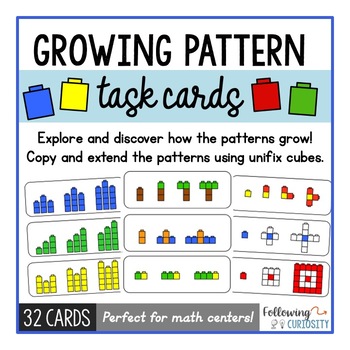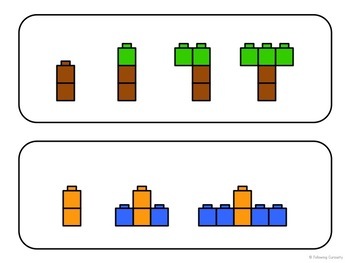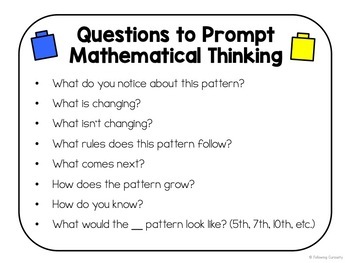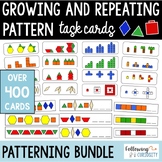Growing Pattern Activities: Growing Pattern Task Cards Math Center
- PDF
What educators are saying
Also included in
- Use pattern blocks and unifix cubes to copy, extend, and create the next part of the pattern! These task cards are a perfect hands-on activity for math centers and help to build students' mathematical reasoning skills. Solving visual pattern puzzles like these helps lay the foundation for solving inPrice $12.50Original Price $17.00Save $4.50
Description
Use unifix cubes to copy and extend the next part of the growing pattern! These task cards are perfect for math centers and help to build students' mathematical reasoning skills. Also called increasing patterns, solving visual patterns like these helps lay the foundation for solving increasingly complex patterns such as number patterns.
Ideas for use: math centers, guided math, morning tubs, soft start bins, choice time, indoor recess, whole group, partner time, individual practice bins, math rotations, early finisher activities, and more!
Prompt your students to extend the patterns with unifix cubes using these task cards! 32 growing pattern cards included, as well as a printable list of questions to prompt students to discuss their mathematical thinking. Just print, laminate, and go!
Check out my other Growing Pattern resource:
Growing Pattern Task Cards: Pattern Block Math Puzzles
Follow me to find other math resources like this in my store Following Curiosity:
Quick Images: Subitizing Cards for Number Talks
Race to 100! Hundreds Chart Game
FREE TPT credits for leaving reviews:
- Go to My Purchases > Leave a Review
- Give a rating and leave a comment
- Earn credits to use on future purchases!
Thank you for stopping by! Your support and feedback is greatly appreciated. ☺






